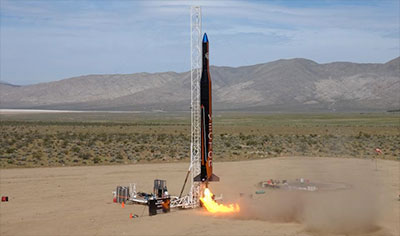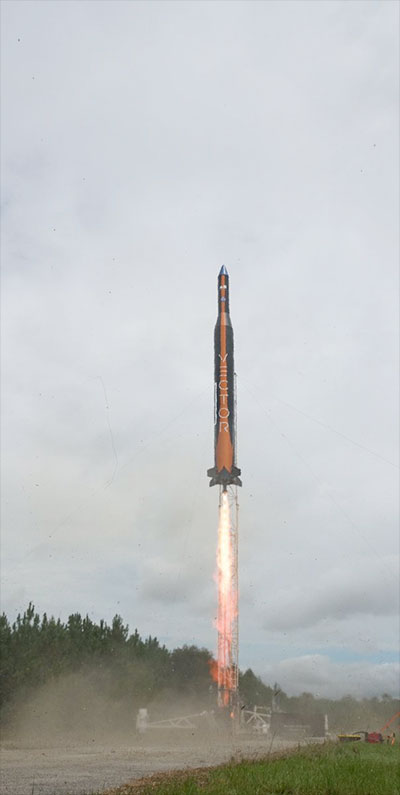 Space News space history and artifacts articles Messages space history discussion forums Sightings worldwide astronaut appearances Resources selected space history documents |
If you have previously registered, but forgotten your password, click here.
"2017 has already been a ground-breaking year for Vector as we continue testing full-scale vehicle engineering models to demonstrate functionality and flight operations," said Vector co-founder and CEO Jim Cantrell. "The success of this test not only sets the standard for the swift mobile development of our launch vehicles, but also furthers our mission to revolutionize the spaceflight industry and increase speed to orbit." This successful flight test represents Vector's next technical milestone of the Vector-R launch vehicle. The flight test, which took place in Mojave, Calif. on May 3, featured Vector's first stage 5K-lbf engine and 3D additive manufacturing printed injector, which was successfully tested in December 2016, and developed in partnership with NASA's Flight Opportunities Program. This specific use of a 3D additive manufacturing injector is the latest in manufacturing technology. Traditional manufacturing uses a machine to produce multiple parts and then workers to assemble them together, but 3D additive manufacturing technology does not need assembly since it is built in one piece. This new manufacturing technology will reduce both cost and labor, as well as cut down on wasted raw material. It will also improve quality issues such as the alignment of parts. "With this successful in-flight operation of an additively manufactured injector, we have now moved the maturity of this technology to the next level for small launch vehicles," said John Peugeot, NASA's Marshall Space Flight Center project manager for 3D Additive Manufactured (AM). "This represents a critical step in moving AM hardware beyond laboratory testing and toward qualification for real-world applications."  This announcement comes on the heels on Vector's recent agreement to conduct a flight test in Camden County, Georgia. Vector and key members of the spaceport community in Camden County showcased the Vector-R launch system and concept of operations for future launch operations on-site last week. The summer launch from Spaceport Camden is part of a series of incremental launches which will help Vector further validate the company's technology, mature launch vehicle design and operations, and evaluate candidate launch sites for the future. "In the 1960's NASA tested some of the most powerful rockets ever constructed on the site proposed for Spaceport Camden and we benefited from that enthusiasm and hunger for innovation," said David Ralston, Speaker of the Georgia House of Representatives. "Vector's successful tests prove that it is an innovator in this dynamic field. Georgia looks forward to working with commercial space companies, like Vector, as we begin the next chapter of space exploration and innovation." | ||||||||
| Robert Pearlman | From Vector Space Systems on Twitter (video): Vector-R block 0.002 successful launch at Spaceport Camden [Georgia] today with customer payload from Astro Digital.  | |||||||
| Robert Pearlman | U.S. Air Force release Space and Missile Systems Center awards $3.4 million Small Rocket Program-Orbital contract to Vector Launch of Tucson, Arizona | |||||||
| Robert Pearlman | From Vector on Twitter: Vector announces departure of Jim Cantrell from Vector and appointment of John Garvey as new CEO. The following statement outlines the current state of the business. More to follow in the coming days. | |||||||
| Robert Pearlman | Vector filed for Chapter 11 bankruptcy Dec. 13 as part of an agreement that could see some of its satellite technology assets sold to Lockheed Martin, reports SpaceNews. The company filed a voluntary petition for bankruptcy with the United States Bankruptcy Court for the District of Delaware, the state where the company was incorporated. Garvey Spacecraft Corporation, a wholly owned subsidiary of Vector, also filed for Chapter 11 in Delaware at the same time... | |||||||
